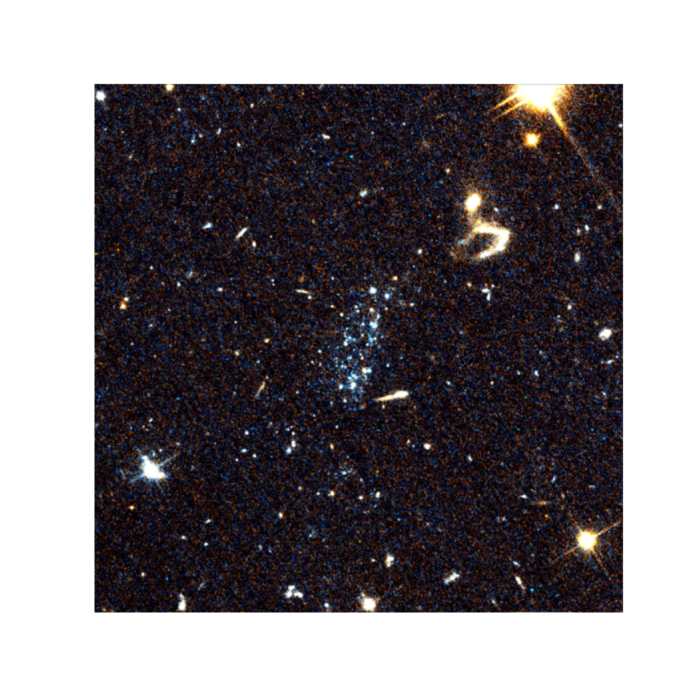Enigmatic ‘blue blobs’ are new kind of star system, astronomers say
Newly discovered blobs of blue stars could tie into the larger processes of galactic evolution and stellar renewal

Your support helps us to tell the story
From reproductive rights to climate change to Big Tech, The Independent is on the ground when the story is developing. Whether it's investigating the financials of Elon Musk's pro-Trump PAC or producing our latest documentary, 'The A Word', which shines a light on the American women fighting for reproductive rights, we know how important it is to parse out the facts from the messaging.
At such a critical moment in US history, we need reporters on the ground. Your donation allows us to keep sending journalists to speak to both sides of the story.
The Independent is trusted by Americans across the entire political spectrum. And unlike many other quality news outlets, we choose not to lock Americans out of our reporting and analysis with paywalls. We believe quality journalism should be available to everyone, paid for by those who can afford it.
Your support makes all the difference.They’re not really galaxies, and they’re not your ordinary star cluster. Mysterious “blue blobs” consisting of only young, blue stars, and isolated from nearby galaxies may be an entirely new type of star system.
That’s according to findings recently presented at the 240th meeting of the American Astronomical Society in Pasadena, California. These blobs exist as much as 300,000 light years away from other galaxies, and may have formed when the blobs were forcefully ejected from a parent galaxy by collision with another galaxy.
A team of astronomers led by University of Arizona professor of astronomy David Sand, along with colleagues in other research teams, spotted the first of the blobs, SECCO1, while examining intergalactic clouds of gas for signs of newly forming stars. Using the Hubble Space Telescope, the Very Large Array telescope in New Mexico, and the Very Large Telescope in Chile, the research team pinpointed SECCO1’s location in the Virgo cluster, a group of galaxies about 65 million light years away from Earth.
SECCO1 and other blobs identified by the researchers contained only young, blue stars, with no older red stars in evidence. The blobs also lacked signs of atomic hydrogen, clouds of singular hydrogen atoms that typically bind with each other to form molecular hydrogen prior to star formation.
“The existence of mostly young stars and little gas signals that these systems must have lost their gas recently,” University of Arizona Steward Observatory postdoctoral fellow Michael Jones said in a statement. Dr Jones is also the lead author of a study describing the blue blob star systems.
In addition to the youthful stellar population and lack of atomic hydrogen gas, the blue blobs also possessed a high percentage of elements heavier than helium, he said, which provided some clues as to the blobs’ origins.
"To astronomers, metals are any element heavier than helium," Dr Jones said in a statement. "This tells us that these stellar systems formed from gas that was stripped from a big galaxy, because how metals are built up is by many repeated episodes of star formation, and you only really get that in a big galaxy."
Gas can be stripped when two galaxies pass near each other, a process known as tidal stripping. But Dr Jones and his colleagues believe the blobs originated in a more cataclysmic interaction, where one galaxy essentially “belly flops” into another, forcing out clouds of gas in a process known as ram pressure stripping.
That could tie these entirely new star formations into what astronomers know about existing galaxies, as ram pressure stripping is believed to affect the evolution of galaxies much larger than the blobs.
“We think that this belly flopping process changes a lot of spiral galaxies into elliptical galaxies on some level, so learning more about the general process teaches us more about galaxy formation,” Dr Sand said in a statement, and the “story of recycling of gas and stars in the universe.”
Join our commenting forum
Join thought-provoking conversations, follow other Independent readers and see their replies
Comments